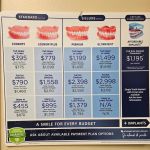Prevention and Treatment of Tooth Enamel Erosion
Tooth enamel erosion is a common dental issue that can significantly affect your oral health. It occurs when the enamel—the protective outer layer of your teeth—wears away due to acids, whether from food, drinks, or certain health conditions. The process is gradual, but over time, it can lead to tooth sensitivity, cavities, and other dental problems. Understanding the causes, recognizing the signs, and knowing how to treat and prevent enamel erosion is essential for maintaining a healthy smile. Let’s dive into the ways you can protect your teeth and keep your enamel in optimal condition.
- Understanding the Causes of Tooth Enamel Erosion
- Signs You Might Have Enamel Erosion
- How to Prevent Enamel Erosion
- Treatment Options for Enamel Erosion
1. Understanding the Causes of Tooth Enamel Erosion
Enamel erosion is mainly caused by acidic foods, drinks, and certain habits. Regular consumption of sodas, citrus fruits, coffee, and even wine can wear down enamel due to their acidic nature. But acids are not the only culprits. Gastroesophageal reflux disease (GERD) and bruxism (teeth grinding) also contribute to enamel erosion. GERD causes stomach acid to flow into the mouth, and bruxism can lead to mechanical wear. Understanding these causes is the first step in preventing further damage to your teeth.
2. Signs You Might Have Enamel Erosion
Recognizing the signs of tooth enamel erosion early can help you take action before it becomes more severe. If you notice increased tooth sensitivity, especially when consuming hot, cold, or sweet foods, it could be a sign of enamel erosion. Teeth may also appear more yellow, as the yellowish dentin beneath the enamel becomes more visible. In some cases, teeth might become more rounded or jagged. If you suspect you are experiencing enamel erosion, it is vital to seek a dentist’s evaluation for the best treatment plan.
3. How to Prevent Enamel Erosion
Preventing enamel erosion begins with making a few lifestyle changes. Here are some practical steps you can take:
- Avoid acidic foods and drinks: Limit your consumption of citrus fruits, carbonated beverages, and wine. When you do indulge, rinse your mouth with water afterward.
- Use a soft-bristled toothbrush: Brushing your teeth too hard with a hard-bristled brush can exacerbate enamel wear. Choose a soft-bristled brush and use gentle, circular motions.
- Use fluoride toothpaste: Fluoride helps strengthen tooth enamel and can reverse some of the damage caused by acid. Make sure you are using a fluoride-rich toothpaste to protect your teeth.
- Drink plenty of water: Water helps wash away food particles and acids in your mouth, reducing the chances of enamel erosion.
- Chew sugar-free gum: Gum that is free from sugar can help stimulate saliva production, which naturally neutralizes acids in your mouth and strengthens your enamel.
4. Treatment Options for Enamel Erosion
Once enamel erosion has occurred, it is not possible to fully restore it. However, there are several treatments that can help protect your teeth and alleviate symptoms:
- Dental bonding: If the erosion has caused noticeable damage, dental bonding can be applied to restore the appearance of your teeth.
- Veneers: Dental veneers can be an option if enamel loss is significant. They are thin layers of porcelain that are placed over your teeth to protect them and improve their appearance.
- Fluoride treatments: Your dentist may apply fluoride treatments to help remineralize and strengthen the remaining enamel, making your teeth more resistant to further damage.
- Fillings or crowns: In severe cases, fillings or crowns may be necessary to protect your teeth and restore their functionality.
Preventing and treating tooth enamel erosion is crucial for maintaining good oral health. By following proper dental care practices, avoiding acidic foods, and seeking early intervention, you can protect your enamel and keep your smile bright and healthy. If you suspect enamel erosion or need personalized advice, make an appointment with a trusted dental professional.
SEO Title: Prevention and Treatment of Tooth Enamel ErosionSEO Keywords: tooth enamel erosion, enamel erosion prevention, treatment for enamel erosion, dental care for enamel erosionSEO Description: Learn about the causes, prevention, and treatment of tooth enamel erosion. Discover effective strategies to protect your enamel and maintain a healthy smile.






 Apex Endodontics4.0 (99 review)
Apex Endodontics4.0 (99 review) Dr. Lutfi Nassar, DDS5.0 (5 review)
Dr. Lutfi Nassar, DDS5.0 (5 review) Affordable Dentures & Implants4.0 (757 review)
Affordable Dentures & Implants4.0 (757 review) North Dover Dental of Toms River4.0 (257 review)
North Dover Dental of Toms River4.0 (257 review) Valleywise Community Health Center - Mesa3.0 (252 review)
Valleywise Community Health Center - Mesa3.0 (252 review) Legacy Smiles Orthodontic Specialists4.0 (92 review)
Legacy Smiles Orthodontic Specialists4.0 (92 review) The Importance of Oral Health Education During Pregnancy for a Healthy Pregnancy
The Importance of Oral Health Education During Pregnancy for a Healthy Pregnancy Best Tips for Brushing Your Teeth Properly for Healthy Gums: Essential Techniques for Oral Health
Best Tips for Brushing Your Teeth Properly for Healthy Gums: Essential Techniques for Oral Health Why Skipping Dental Checkups Can Lead to Bigger Oral Health Problems
Why Skipping Dental Checkups Can Lead to Bigger Oral Health Problems Advantages of Porcelain Dental Restorations
Advantages of Porcelain Dental Restorations How Can Diabetes Cause Tooth and Gum Problems? Preventing and Managing Oral Health Issues
How Can Diabetes Cause Tooth and Gum Problems? Preventing and Managing Oral Health Issues Healthy Habits for Promoting Good Oral Health and Hygiene: Tips for a Healthy Smile
Healthy Habits for Promoting Good Oral Health and Hygiene: Tips for a Healthy Smile